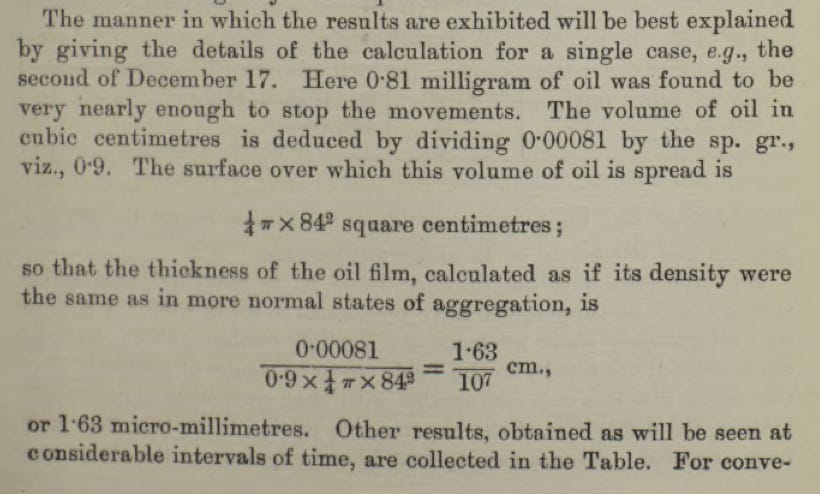What is the size of a single molecule of oil? What may initially seem like a trick question – answerable only through the use of complicated, high-tech scientific equipment – is actually as easy to calculate as the circumference of planet Earth. Much like how [Eratosthenes] used a couple of sticks to achieve the latter feat back in about 240 BCE, the size of a molecule of olive oil was calculated in 1890 by [Lord Rayleigh], which is the formal title of [John William Strutt]. Using nothing but water and said olive oil, he managed to calculate the size of a single olive oil molecule as being 1.63 nanometers in length.
To achieve this feat, he took 0.81 mg of olive oil and put it on a known area of water. Following the assumption that the distributed oil across the water surface would form a monolayer, i.e. a layer of oil one molecule thick, he divided the volume of the oil by the covered area, which gave him the thickness of the oil layer. Consequently, this result would also be the dimension (diameter) of a single olive oil molecule.
Many years later we know now that olive oil is composed of triacylglycerols, with a diameter of 1.67 nm, or only about 2% off from the 1890 estimate. All of which reinforces once more just how much science one can do with only the most basic of tools, simply through logical deduction.
